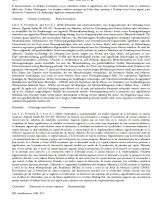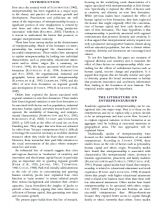Hledej
Zobraz:
Univerzity
Kategorie
Rozšířené vyhledávání
12 662
projektů
Creativity and Entrepreneurship: A Regional Analysis of New Firm Formation
| Přípona |
Typ referát |
Stažené 0 x |
| Velikost 0,1 MB |
Jazyk anglický |
ID projektu 2896 |
| Poslední úprava 27.03.2014 |
Zobrazeno 1 629 x |
Autor: eliseus |
 Sdílej na Facebooku
Sdílej na Facebooku |
||
| Detaily projektu | ||
- Cena:
2 Kreditů - kvalita:
87,5% -
Stáhni
- Přidej na srovnání
- Univerzita:Univerzita Tomáše Bati ve Zlíně
- Fakulta:Fakulta managementu a ekonomiky
- Kategorie:Ekonomika » Management
- Předmět:Management
- Studijní obor:-
- Ročník:-
- Formát:PDF dokument (.pdf)
- Rozsah A4:13 stran
L S. Y., F R. and A Z. J. (2004) Creativity and entrepreneurship: a regional analysis of new firm formation, Regional Studies 38, 879-891. Understanding the factors that promote or mitigate new firm birth is crucial to regional economic development efforts, since a high level of new firm creation significantly contributes to regional economic vitality and is a major signal of a dynamic economy. The literature suggests that various factors such as unemployment, population density/growth, industrial structure, human capital, the availability of financing and entrepreneurial characteristics significantly influence regional variation in new firm birth rates. This study explores whether connections exist among regional social characteristics, human capital and new firm formation. It argues that social diversity and creativity have a positive relationship with new firm formation. Building on the contributions of urbanist Jane Jacobs, Lee, Florida and Gates (2002) showed that social diversity and human capital have positive and significant relationships with regional innovation production measured by per capita patent production. While it is well known that regional human capital stock positively affects new firm formation rates, little attention has been paid to the interaction among social diversity, human capital and entrepreneurship. It is argued that low barriers of entry into the regional labour market (as exhibited in part by the presence of a diverse population) and diverse culture facilitate the influx of a particular kind of human capital that promotes innovation and accelerates information flow, leading to the higher rate of new firm formation. The empirical results support the main hypothesis. By using Longitudinal Establishment and Enterprise Microdata (LEEM), the hypothesis is tested at the Metropolitan Statistical Areas (MSAs) level as well as at the Labor Market Areas (LMAs) level. New firm formation is strongly associated with cultural creativity when controlled for the variables suggested in the literature. Firm formation is positively and significantly associated with the Diversity Index but insignificantly with the Melting Pot Index. The results suggest that one needs to pay attention to the social habitat of a region to boost a regional entrepreneurial dynamics.
Klíčová slova:
region
creative
economic
development
diversity
Obsah:
- INtroduction
The literature on entrepreneurship
Data and methods
Regional patterns of firm formation
Explaining regional differences in firm formation
Discussion
References
Zdroje:
- ACS Z. and ARMINGTON C. (1998) Longitudinal Establishment and Enterprise Microdata (LEEM) Documentation. CES 98-9.
- Center for Economic Studies, US Bureau of the Census, Washington, DC.
- ARMINGTON C. (1998) Statistics of U.S. Businesses - Microdata and Tables of SBA/Census Data on Establishment Size. Office of
- Advocacy, US Small Business Administration, Washington, DC.
- ARMINGTON C. and ACS Z. (2002) The determinants of regional variation in new firm formation, Regional Studies 36, 33-45.
- BARTIK T. (1989) Small business start-ups in the United States: estimates of the effects of characteristics of states, Southern
- Economic Journal 55, 1004-1018.
- BAUMOL W. (2002) The Free-market Innovation Machine: Analyzing the Growth Miracle of Capitalism. Princeton University Press,
- Princeton.
- BLACK D., GATES G., SANDERS S. and TAYLOR L. (2000) Demographics of the gay and lesbian population in the United
- States: evidence from available systematic data sources, Demography 37(2), 139-154.
- BLANCHFLOWER D. and OSWALD A. (1990) What Makes an Entrepreneur?, Journal of Labor Economics 16, 26-60.
- CATTELL R. B. and BUTCHER H. (1968) The Prediction of Achievement and Creativity. Bobbs-Merrill, Indianapolis.
- CHELL E., HAWORTH J. M. and BREARLEY S. (1991) The Entrepreneurial Personality: Concepts, Cases and Categories. London,
- Routledge.
- DESROCHERS P. (2001) Local diversity, human creativity, and technological innovation, Growth and Change 32, 369-394.
- EVANS D. S. and LEIGHTON L. S. (1989) Some empirical aspects of entrepreneurship, American Economic Review 79, 519-535.



